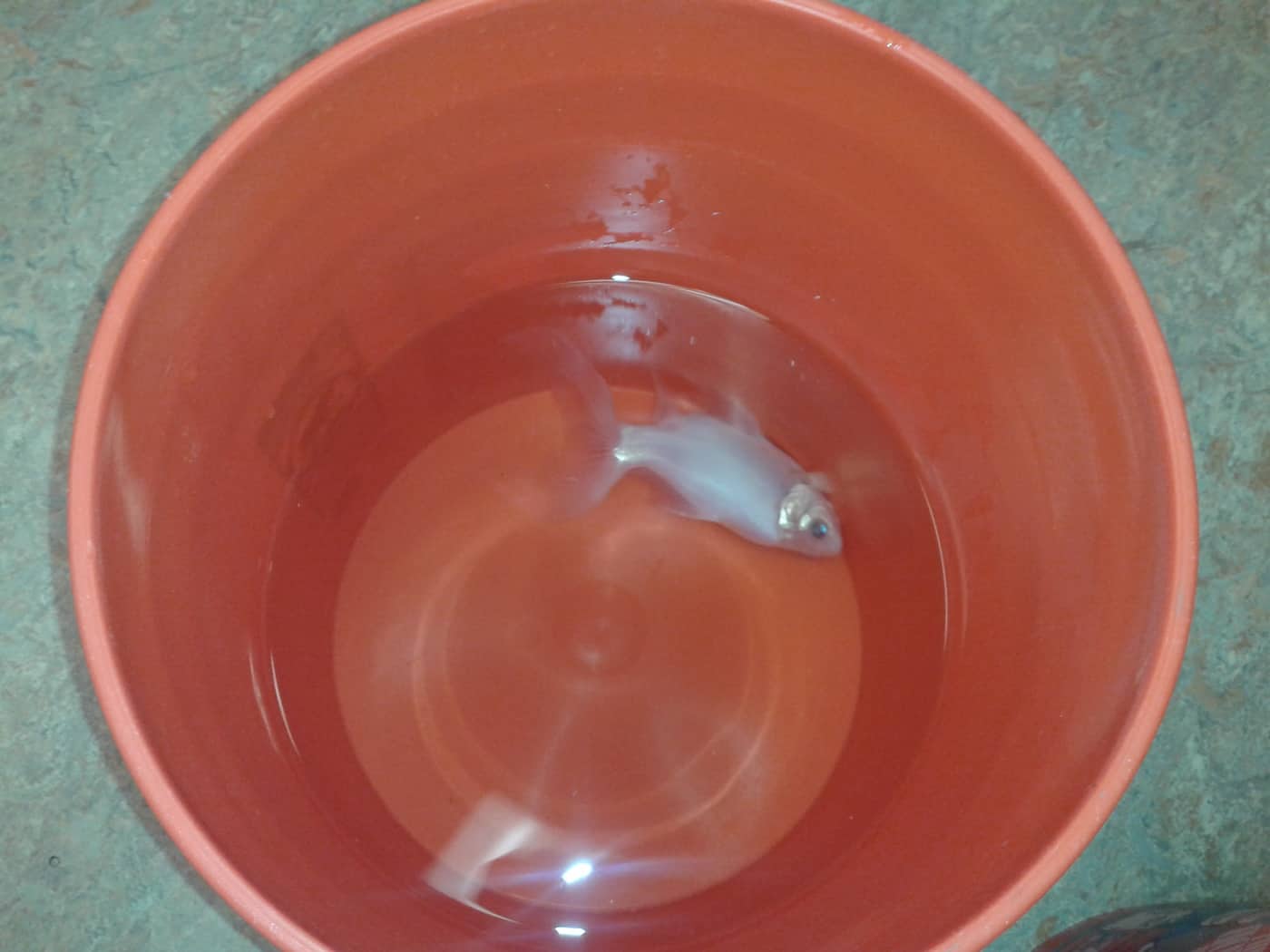Transporting fish can be tricky, but here are some steps to ensure their safe transfer:
1. Prepare the transportation container: Use a clean and durable plastic bag or a suitable fish transportation container filled with water. Make sure it’s big enough to accommodate the fish comfortably, allowing room for movement.
2. Prepare the fish: Take some time to prepare the fish for transportation. Feed them lightly a day before the transportation to reduce waste in the container.
3. Inspect the container: Check for any leaks or cracks in the container or bag to ensure it is secure.
4. Partially fill the container: Fill the transportation container with the same water from the fish tank, ensuring there is sufficient water to cover the fish completely. Leave some air space at the top to allow for oxygen exchange.
5. Acclimate the fish: Float the closed fish bag or container in the original aquarium water for about 15 minutes. This helps the fish adapt to the temperature gradually, preventing shock.
6. Add oxygen: Include a small amount of oxygen or seal the container tightly to prevent oxygen exchange. This is especially important if the travel duration is long or if shipping fish.
7. Secure the container: Seal the container securely to prevent any accidental openings. Double-bagging might be necessary for added protection.
8. Protect from temperature extremes: Avoid extreme temperatures during transportation. If traveling in a vehicle, keep the temperature comfortable for the fish. In colder weather, consider insulating the transportation container to maintain warmth.
9. Avoid direct sunlight and excessive shaking: Prevent direct sunlight exposure, as it can quickly raise the temperature inside the container. Avoid excessive shaking or rough handling that might stress the fish.
10. Transport with care: During transportation, try to minimize turbulence or jolts to the container. Ensure a stable position, preferably on a flat surface.
11. Monitor during transportation: Keep an eye on the fish during the journey, checking for any signs of distress or complications, such as excessive sloshing.
12. Unpack carefully: Upon reaching the destination, carefully unpack the fish. Lower the transportation container into the new tank and allow the fish to swim out naturally.
Remember, before transporting fish, it’s essential to check your local and international regulations to ensure compliance with any legal requirements or restrictions.
Know More About: how to transport fish
Transporting Fish: A Guide to Safely Moving Your Aquatic Pets
Introduction:
Transporting fish can be a daunting task, but with the right knowledge and preparation, you can ensure your aquatic pets arrive safely and thrive in their new environment. Whether you’re moving, buying new fish, or simply need to relocate them temporarily, here’s a comprehensive guide on how to transport fish smoothly and stress-free.
1. Gather the Essentials:
Before you begin the process, gather all the necessary supplies. This includes a clean transport container, such as a plastic bag or fish tank, water conditioner, a net, and a fish bag sealing clip. Having these items readily available will help streamline the process.
2. Prepare the Transport Container:
Thoroughly clean and rinse the transport container to remove any residues that may harm your fish. Choose one that allows space for your fish and adequate water circulation. Ensure there are no sharp edges or objects that could injure them during transportation.
3. Gradually Adjust Water Parameters:
Fish are highly sensitive to sudden changes in temperature and water conditions. A few days before transportation, start adjusting the water temperature and parameters in the transport container to match that of their current tank. This will minimize stress and promote their well-being during the journey.
4. Bagging and Sealing Fish:
When it’s time to bag your fish, fill the transport container with their tank water, leaving enough space for air. Catch your fish gently using a net, taking care not to handle them roughly or squeeze too tightly. Once the fish is secured in the bag, fill it with the transport water while ensuring enough air remains to prevent suffocation. Using a fish bag sealing clip, seal the bag tightly to prevent any leaks.
5. Protecting Fish during Travel:
To keep the fish safe and peaceful during transportation, ensure the transport container is kept upright and stable at all times. Avoid exposing the bag to direct sunlight or extreme temperatures. If possible, insulate the container with a towel or cooler to maintain the water temperature and reduce stress.
6. Transporting Fish by Car:
If you’re moving fish by car, place the sealed bags in a sturdy cooler, secured to prevent any movement or spilling. Drive carefully, avoiding sudden accelerations, decelerations, and sharp turns. Ideally, the fish should be the last items loaded and the first ones unloaded to minimize their time in transit.
7. Shipping Fish:
For long-distance transportation or shipping, consult reputable pet couriers familiar with handling live fish. They will provide specialized and secure shipping containers to ensure the safety and well-being of your aquatic pets. Clearly label the package as “LIVE FISH” with the proper arrows to indicate the correct orientation.
8. Acclimatizing to New Environment:
Once you arrive at your destination or receive the shipped fish, acclimatize them slowly to prevent shock. Gradually mix the water from their transport container with the water from their new tank, adding small amounts every 10-15 minutes. This process helps them adjust to the new water conditions over an hour or two.
Conclusion:
Transporting fish can be a challenging task, but by following these guidelines, you can ensure the safety and well-being of your aquatic pets. Remember, careful planning, adequate supplies, and gradual adjustments to water conditions are essential for a smooth and stress-free transportation experience. Always prioritize the comfort and health of your fish when moving them, whether it’s a short trip or a long-distance relocation.
FAQs on how to transport fish
1. How do I transport fish safely without harming them?
To transport fish safely, use a sturdy and spacious container filled with water from their original tank. Secure the container to prevent water leakage and provide ample oxygen supply during transit.
2. Can I transport fish in plastic bags?
Small fish can be transported in properly sealed plastic bags, but for longer journeys, it’s recommended to use a more stable container with sufficient water volume to reduce stress and prevent damage.
3. Do I need to fast my fish before transport?
Yes, it’s advisable to fast your fish for 24 to 48 hours before transportation. This helps reduce waste production, ammonia buildup, and stress on the fish during the journey.
4. Can I transport fish in a car?
Yes, you can transport fish in a car, but ensure they are kept at a stable temperature and are secured to prevent sudden movements that may cause stress or injury.
5. What temperature should I maintain during fish transportation?
The ideal temperature for most tropical fish during transportation is around the temperature they are accustomed to in their tank. Use insulated containers and consider using heat packs or cool packs depending on the fish’s requirements.
6. How long can fish survive during transport?
This varies depending on the species and conditions, but generally, fish can survive a few hours to several days if adequately prepared and the water quality is maintained. Avoid extending the duration unnecessarily.
7. Should I use tap water or tank water for fish transportation?
Preferably use water from the fish’s original tank to transport them as tap water may contain harmful chemicals. Ensure the tank water is properly conditioned and heated to the required temperature beforehand.
8. Can I transport fish together with other pets?
Transporting fish with other pets is not recommended as it may cause stress or harm to the fish. They should be transported separately to minimize undue agitation.
9. How often should I change the water during transportation?
It’s best to avoid changing the water during transportation unless it becomes excessively dirty or contaminated. Frequent water changes can stress the fish and negatively affect their health.
10. What should I do when I reach my destination?
Upon reaching your destination, acclimate the fish slowly to their new surroundings by gradually adding small amounts of the new tank water to their transport container. This will help them adjust to the water and temperature of their new home without shocking their system.

